Where To See The Northern Lights in The United States: 4 Best States for Aurora Viewing
The United States has already enjoyed several episodes of nature’s best light show in 2023, and the viewing opportunities are about to explode as we approach another solar maximum period in 2025, leaving many wondering where to see the northern lights.
As an aurora enthusiast, I’m excited to live above the 45th parallel, less than two hours from Lake Superior‘s southern shoreline, making my chances of seeing the northern lights greater than most U.S. residents. If you’re hoping to catch a glimpse of these dancing lights, you’ll want to know the best places to see them in the U.S.
But first, let’s dive into what causes this unique phenomenon and share some tips for the greatest chances to catch them in action.
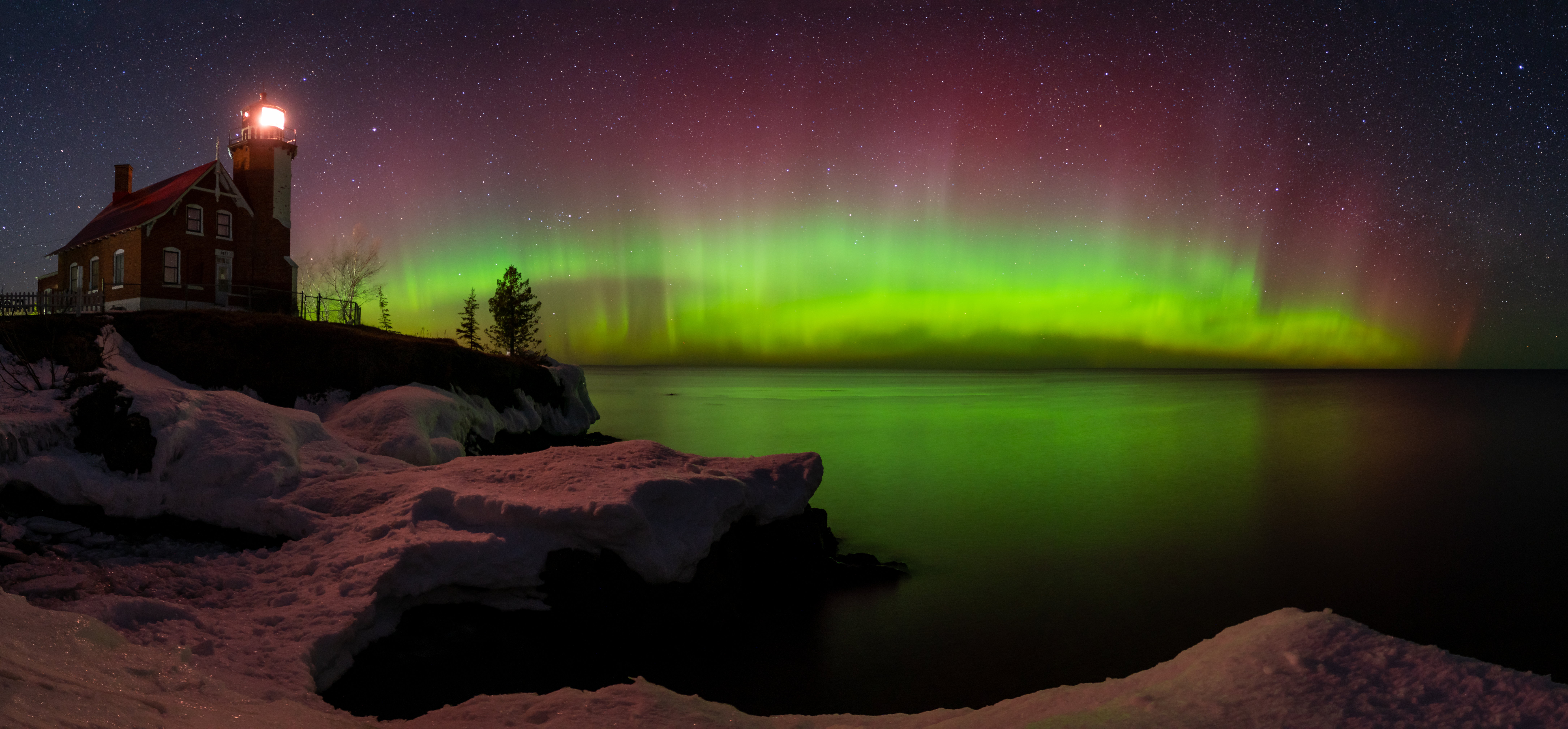
What Are The Northern Lights?
The northern lights, also known as aurora borealis, are a natural light display in the Earth’s sky, predominantly seen in high-latitude regions of the Northern Hemisphere, around the Arctic Circle.
They occur when charged particles from the sun collide with atoms in the Earth’s upper atmosphere, creating a colorful and dynamic light show that can appear as curtains, rays, spirals, or other patterns.
Light green and pink are the colors that appear most frequently in auroral displays. Hues of red, yellow, green, blue, and violet have also been reported. The different types of interacting gas particles are what give the colors their variation.
Fun Fact: The Southern Hemisphere has its own set of aurora lights, called the aurora australis, also known as the southern lights.
When To See The Northern Lights
The best atmospheric conditions for viewing the aurora borealis in the United States seem to occur during the transitions from winter to spring and fall to winter.
April, October, and November are the most popular months for northern lights activity across North America. It’s more common to see the northern lights in winter as the night skies are darker longer.
The northern lights are most visible between 9:30 pm and 2:00 am, but the visibility does not generally last for more than 15-20 minutes unless you’re deep within the auroral ovation.
How To Get an Auroral Forecast
The U.S. Space Weather Prediction Center (SWPC) is the best place to find an updated northern lights forecast as they have both a three-day forecast and show geomagnetic activity in the last 30 minutes for current northern lights possibilities.
Geomagnetic activity is measured using the planetary K index (Kp) with a range of 0-9, with 0 being the least activity. The higher the Kp, the greater the activity of the northern lights and the greater the range of visibility.
The SPWC states that for a 0-2 Kp, the aurora will be “far north, quite dim in intensity, and not very active.” The northern lights will spread farther from the North Pole and become brighter with “more auroral activity” once the Kp reaches the 3-5 range.
Tips for Seeing The Northern Lights
Increase the chances of seeing the northern lights by getting north of the 45th parallel in a dark area, wide open to the north. Time your chase to the new moon cycle (less moonlight means darker skies), and watch the U.S. Space Weather Prediction Center website for reports of solar storm activity.
Be patient and keep your eyes on the northern sky when activity is possible. Auroras can occur suddenly and are unpredictable. Nature’s light show can be easy to miss when it is dim because it resembles a wispy gray or white cloud.
The best places for aurora viewing are dark sky parks. The United States is home to over 60 of these internationally designated regions, and many of them sit high enough on the latitude charts to catch an occasional glimpse of nature’s light show.
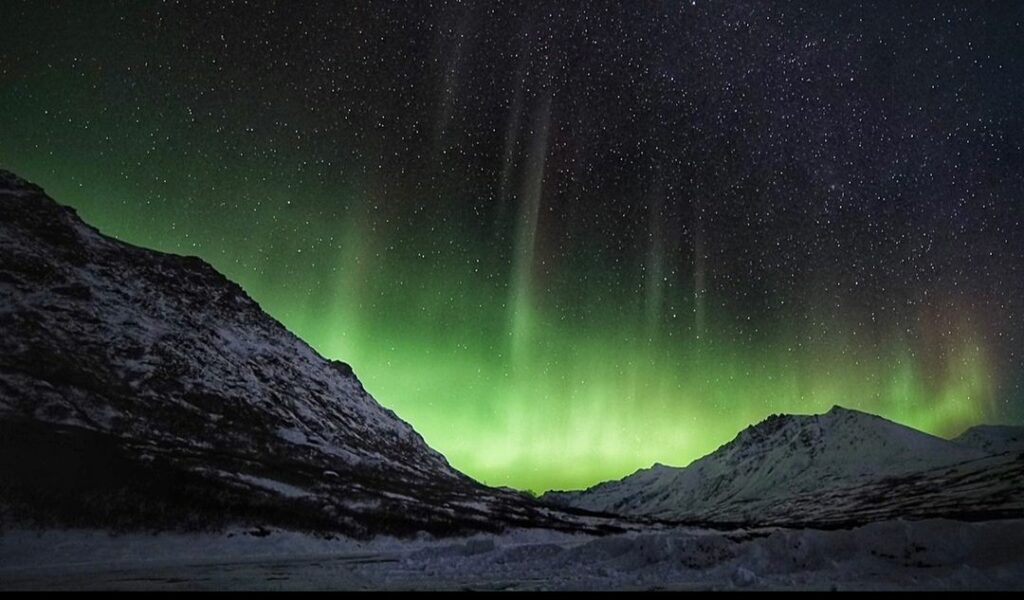
Where To See The Northern Lights in The U.S.
While it may be possible to catch a glimpse of the northern lights in other areas of the U.S., the most common states to see them are Alaska, Minnesota, Michigan, and Maine. These states all boast dark, wide-open skies north of the 45th parallel, giving residents and visitors the best chance of experiencing this unique phenomenon.
Alaska Northern Lights
Alaska is one of the best places in the world to see the northern lights. Some of the top places in Alaska to see the northern lights are:
- Fairbanks
- Anchorage
- Denali National Park
- Nome
- Talkeetna
- Wrangell-St. Elias National Park and Preserve
Note: Alaska has the greatest potential of all the states for northern light activity due to its proximity to the Arctic Circle.
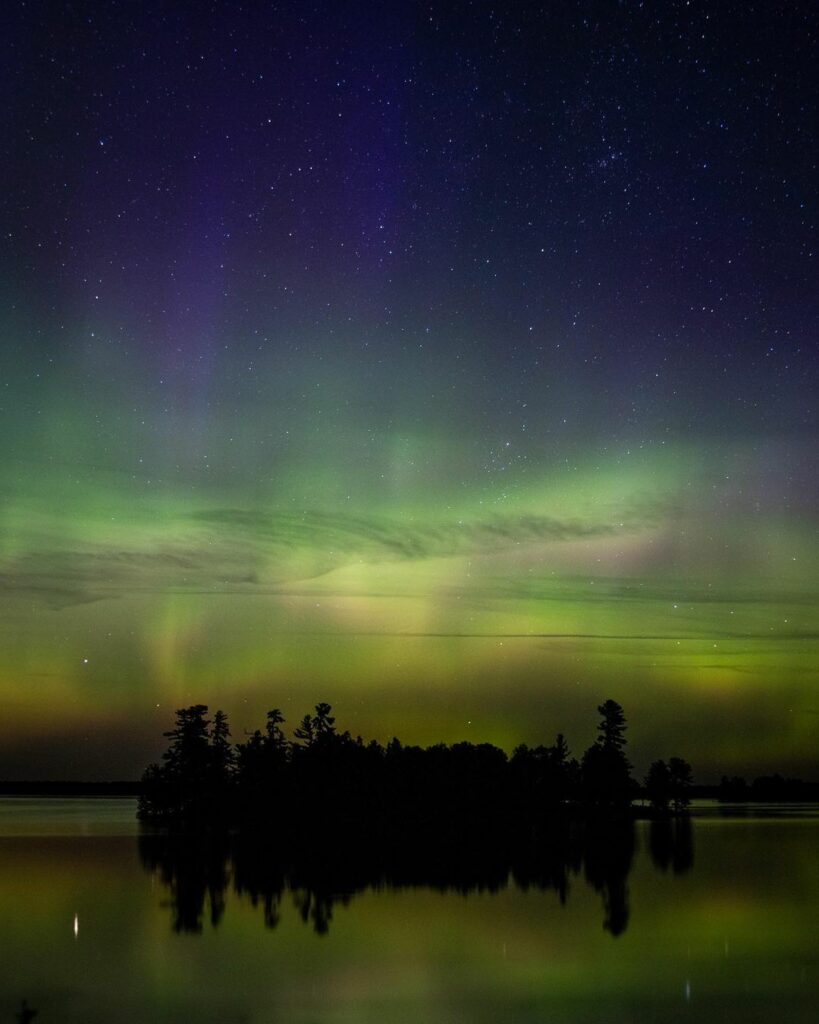
Minnesota Northern Lights
Minnesota, the Land of 10,000 Lakes, is another place with great potential for seeing northern lights. Some of the high-potential places to see the northern lights here are:
- Voyageurs National Park
- Lake of the Woods
- Boundary Waters Canoe Area Wilderness
- Gunflint Trail
- Hallock
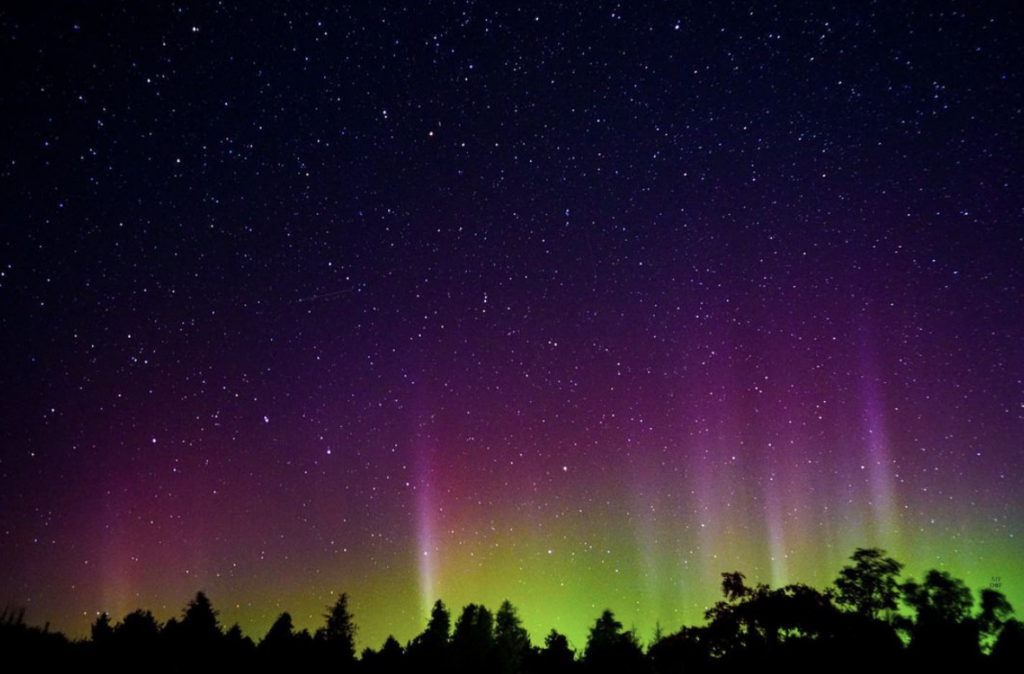
Michigan Northern Lights
Michigan’s shorelines are a great place to see the aurora borealis. The Upper Peninsula is particularly prone to stunning displays of auroras. Some of the best places to see the northern lights in Michigan are:
- Headlands International Dark Sky Park in Mackinaw City
- Porcupine Mountains Wilderness State Park
- Keweenaw Peninsula
- Pictured Rocks National Lakeshore
- Port Crescent State Park
- Isle Royale National Park
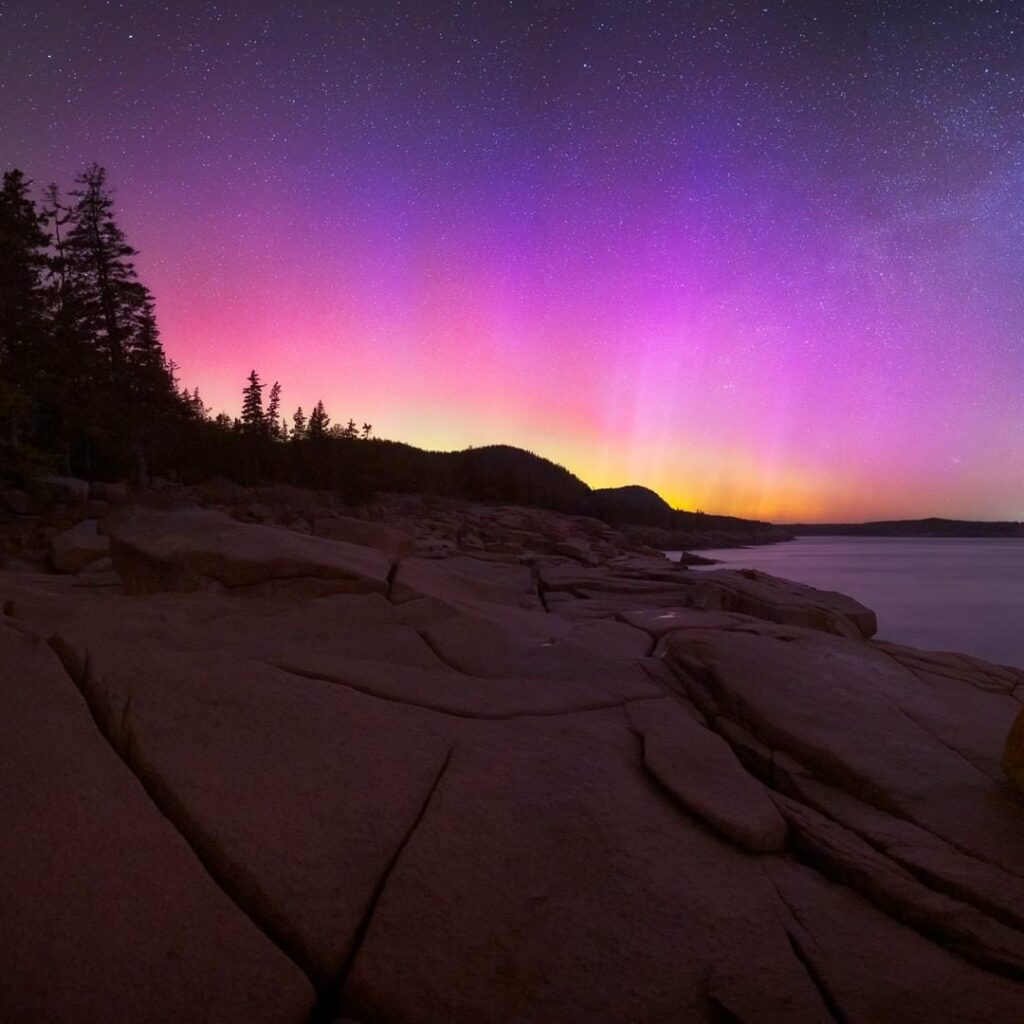
Maine Northern Lights
On the East Coast, Maine is the ideal place to catch a glimpse of the northern lights. Here are some of the top places in Maine to see the aurora borealis:
- Aroostook National Wildlife Refuge
- Moosehead Lake
- Baxter State Park
- Acadia National Park
- Katahdin Woods and Waters National Monument
Additional U.S. Locations for Aurora Viewing
While these four states are the top states for seeing aurora activity, there are several other locations across the country where you can see the northern lights, including:
- Glacier National Park, Montana
- Theodore Roosevelt National Park, North Dakota
- Idaho Panhandle National Forest
- Cherry Springs State Park, Pennsylvania
- Apostle Islands, Wisconsin
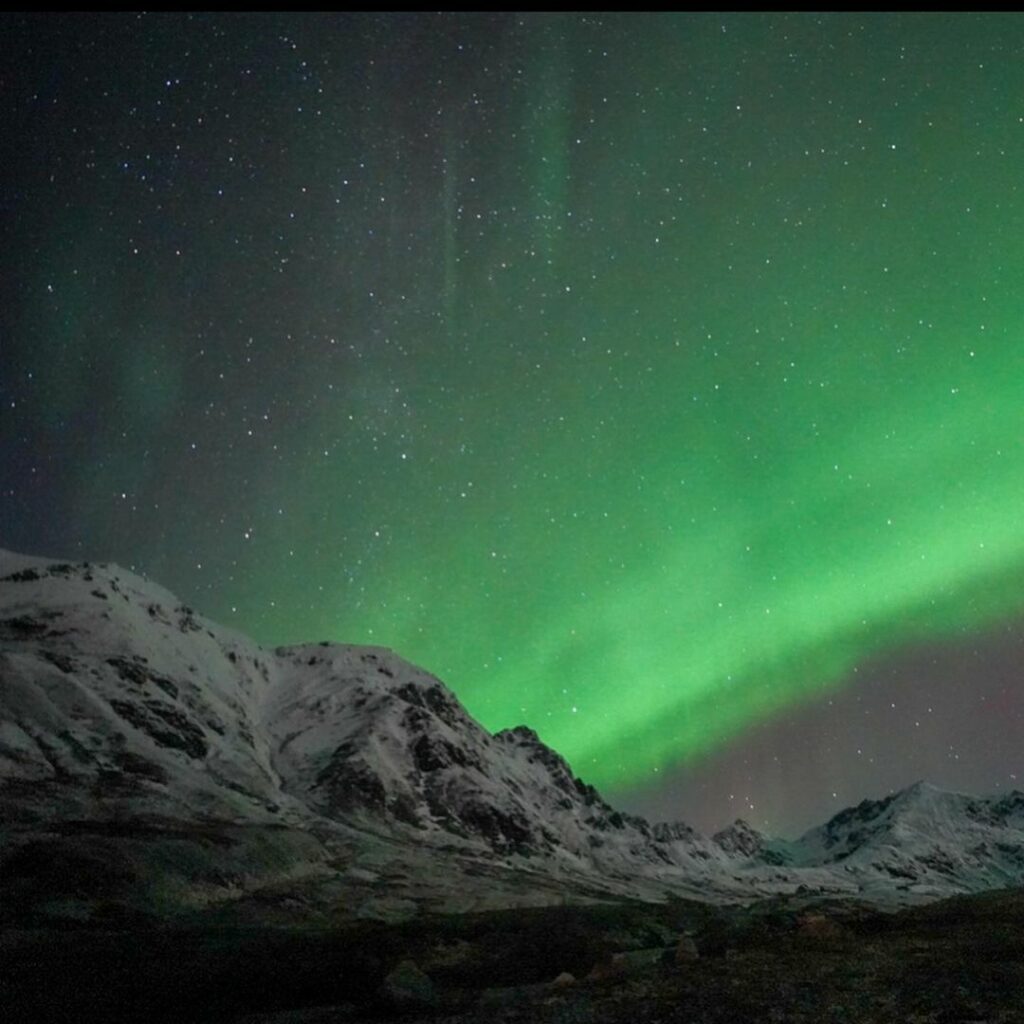
Northern Lights FAQs
1. When Is The Best Time To See The Northern Lights in The U.S.?
The best time to see the northern lights in the U.S. is generally during the winter months, between October and March, when the nights are longer and darker. However, the aurora can be visible year-round, especially during periods of high solar activity.
2. Where Are The Best Places To See The Northern Lights in The U.S.?
Alaska, Minnesota, Michigan, and Maine are some of the best places to see the northern lights in the U.S. There are additional locations, such as national parks and dark sky parks within the United States, that offer optimal viewing conditions.
3. What Should I Bring To See The Northern Lights?
To see the northern lights, you should bring warm clothing, including a hat, gloves, boots, and a camera with a tripod to capture the aurora. It’s also a good idea to bring snacks, a bottle of water, and a red light flashlight to preserve your night vision.
4. How Can I Increase My Chances of Seeing The Northern Lights?
To increase your chances of seeing the northern lights, choose a location with clear skies and little light pollution, and check the aurora forecast before planning your trip. It’s also a good idea to stay for several nights to increase your chances of seeing them.
5. What Causes The Northern Lights?
The northern lights are caused by charged particles from the sun colliding with atoms in the Earth’s upper atmosphere, creating a colorful and dynamic light show. The colors of the aurora depend on the type of gas particles that are colliding, with green being the most common color.
Tips for Photographing The Northern Lights
Many professional and amateur photographers yearn for a chance to capture the northern lights with their cameras. And many have been successful. Here are a few tips if you’re hoping to create an elusive photograph:
- Use a tripod to prevent blur.
- Use manual focus to ensure your camera captures a clear image.
- Use a fast aperture (f/2.8 or wider) and high ISO (3200 or higher) to capture more light and create a brighter image without having to decrease your shutter speed.
Experiment with various settings on your camera to find the best exposure for the night sky, and cross your fingers for a stunning display!
This article originally appeared on Wealth of Geeks.
